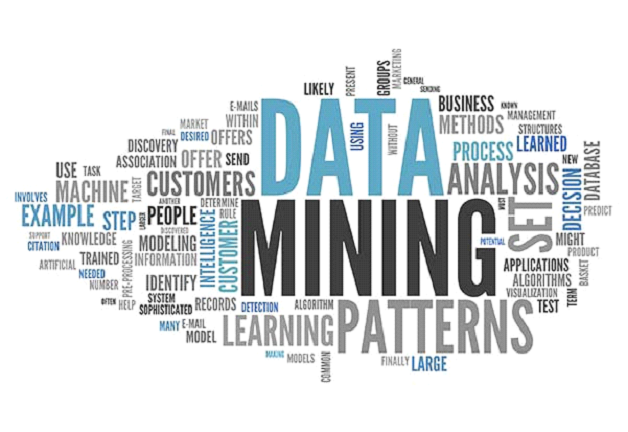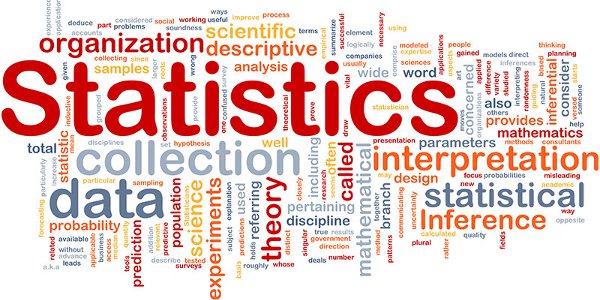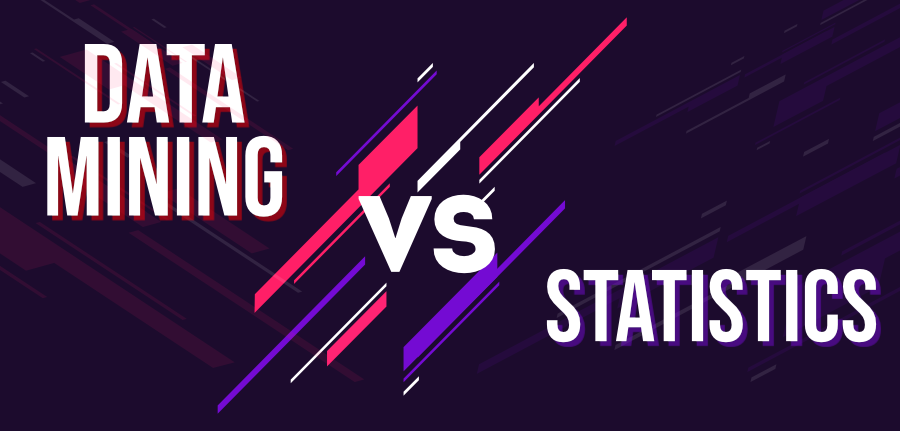Data analysis is all about analyzing past and present data to predict future problems. Organizations are using data mining and statistics to make this data-driven decision, which is a core part of data science. Data mining and statistics are often confused as the same concept, but this is wrong. Both data mining and statistics as data analysis techniques contribute to better decision-making. Let’s see, are they really similar or different?
Table of Contents
Data Mining

What is Data Mining?
Data scientist Usama Fayyad describes data mining as “the non-trivial process of identifying valid, novel, potentially useful and ultimately understandable patterns in data”
Today’s technology has enabled the automatic extraction of hidden predictive information from databases, as well as the fusion of various other frontiers or fields such as statistics, artificial intelligence, machine learning, database management, pattern recognition, and data visualization.
In data mining, individuals apply various statistical, data analysis, and machine learning methods to explore and analyze large data sets to extract new useful information for the benefit of the owners of these data.
Process of Data Mining
The data mining process is divided into the following 5 stages:
Data exploration/collection: Identify data from disparate data sources and load it into a decentralized data warehouse.
Store and manage data: Store data in distributed storage (HDFS), on-premises servers, or in the cloud (Amazon S3, Azure).
Modeling: Business teams, and developers will access the data and apply sampling and transformations to the data, removing corrupt, irrelevant, inaccurate, and incomplete data.
Deploy the model: Based on the results of modeling the data, order the data according to user expectations or results.
Visualize data: Display data in a graph or table or chart or decision tree format so that it can be understood by end users.
Data Mining Applications
Data mining is used in many domains following are some highly used domains:
- Market Analysis and Management
- Corporate Analysis & Risk Management
- Fraud Detection
What is Statistics?

Statistics is an integral part of data mining, which provides tools and analytical techniques for processing large amounts of data. It is a science of learning from data, including everything from collecting and organizing it to analyzing and presenting it. Statistics focuses on probabilistic models using data, especially inference.
Statistics is the analysis and representation of numerical facts or data and is at the heart of all data mining and machine learning algorithms. It provides analytical techniques and tools applied to large datasets. Statistics include planning, designing, collecting data, analyzing, plotting meaningful interpretations, and reporting research results, and since this kind of statistics is not limited to mathematicians, it is also used by business analysts. To obtain desired output or to quantify data statistics, use probability, design investigations, and experiments
How Similar or Different are Data Mining and Statistics?
Both data mining and statistics are concerned with learning from data. They are all about finding and identifying structures in data with the aim of turning data into information. Although the purposes of the two techniques overlap, they have different approaches.
Statistics are just quantitative data. Although it uses tools to find relevant properties of data, it is a lot like mathematics. It provides the tools needed for data mining. On the other hand, data mining builds models to detect patterns and relationships in data, especially from large databases.
Key Differences between Data Mining and Statistics

- Data mining is the beginning of data science, which covers the entire process of data analysis, and statistics is the foundation and core part of data mining algorithms.
- Data mining is an exploratory analysis process in which we first explore and collect data and build models on the data to detect patterns and theoretically analyze them to predict future outcomes or solve problems. Statistics, however, is a confirmation process in which a theory is first proposed and then validated against a data set.
- With the increase in the amount of data every day, the data format is also changing, the data received is mostly unstructured data, which may contain numeric or non-numeric data, both types of data are used in data mining, but statistics only Numeric types of data are used in probability and mathematical calculations and predictions.
- Data mining is an inductive process that uses algorithms such as decision trees, clustering algorithms, etc. to derive data partitions and generate hypotheses from the data, while statistics is a deductive process, i.e. does not involve any predictions, it is used to derive knowledge and validate hypotheses.
- Data mining is less concerned with the collection or collection of data as it is exploratory data analysis. Data mining is primarily software and a computational process for discovering patterns on large data sets, whereas statistics is more about collecting data in order to confirm predictions. We need to collect data and analyze it to answer questions. The data collected can be quantitative, qualitative, primary, or secondary data.
- Data cleaning in data mining is the first step as it helps to understand and correct data quality for accurate final analysis. In data cleaning, users are able to clean inaccurate or incomplete data. Without proper data quality, the accuracy of the final analysis will be compromised, or erroneous conclusions may be drawn. However, in statistics after collecting data from various sources, data cleaning was performed and statistical methods were applied to this cleaned data for confirmatory analysis.
- Data mining is the process of mining previously available unknown but actionable information from large databases to make some critical decisions. Use a set of methods to find patterns and relationships in the available data. It is the confluence of various processes, including statistics, machine learning, database management, artificial intelligence, and data pattern recognition, among others. Statistics is an important part of data mining, which provides effective analytical techniques and tools for processing large amounts of data for the benefit of enterprises. It is a data learning science that covers everything from collecting data to using it effectively.
- Data mining is basically applied in business applications such as financial data analysis, retail industry, telecommunications, biology, and another scientific testing. However, statistics are used in each data sample to extract a new set of information. It describes the characteristics of the data to be analyzed and explores the relationships between the data. It uses predictive analytics to run scenarios and help decide future actions. Statistics, on the other hand, give us a breath of inanimate data.
- Some of the popular trends in data mining are application exploration, visual data mining, biological data mining, web mining, software mining, distributed data mining, real data mining, and more. Statistics help identify new patterns in available unstructured data.
Conclusion
To sum up, due to the emergence of big data volumes and different speeds, data plays an important role in any organization, and predictive results from data mining and statistics are an integral part. Data mining always uses statistical thinking to extract the output, therefore, both data mining and statistics will inevitably grow in the near future. Moreover, it uses statistical data to analyze big data, and users/organizations need to use the ideas and methods of data mining.




